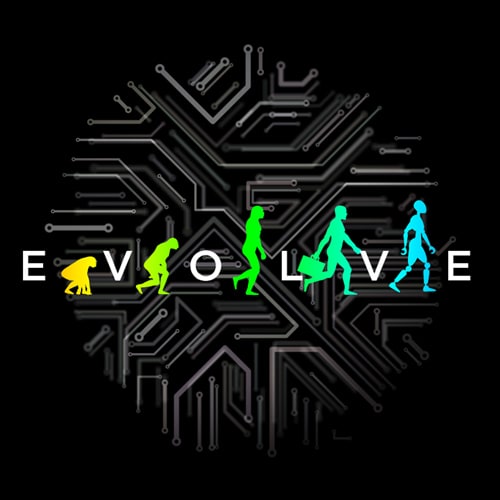Being human first – gearing up to deliver experience has been saved

Perspectives
Being human first – gearing up to deliver experience
In this digital world, you won’t venture far without hearing about the importance of your experience with an organisation, either as a customer or as an employee. We spoke to Andy Sandoz, Chief Creative Officer, and Richard Evans, Director within our Human Capital practice and Employee Experience Lead, about human experience – why it’s a key trend facing all organisations, how it sets companies apart from their competitors, and what it means for us as customers and employees.
What is human experience?
We are all humans, whether we’re a customer or an employee. Human experiences are created for real lives and real people, and are empathetic to our values, contexts and moments in time. Human experiences resonate, both logically and emotionally, with us as human beings.
Organisations are waking up to the fact that they have to re-design themselves to be human-centric and design a frictionless experience both for a consumer and the employees who support that frictionless experience. Organisations that have managed to blur the lines between customer and employee experience have become very successful. You can see that the employees are having a good time, they’re engaged, productive, efficient and quick to help, and it creates that same energy with customers. There’s a sense of ‘work the way we live’ and they’re proud to be part of it.
There are some great examples out there. Recently I went into a store to finally upgrade my personal mobile phone and had a chat with a sales assistant who without any pressure took me through all of the benefits of upgrading. I went home to think about it, and looked at their website which is very easy to flow through. I bought their product using their finance package because I bought the unit itself rather than through a mobile carrier. Then I could have picked up the phone that evening in the store, but decided to go the following day. They set it up for me, as all my backup was on the Cloud. Then five days later, I had a follow-up call, where they took me through some of the new functionality of the phone. Beautiful, seamless, great experience.
Flipping this customer experience internally for employees changes a lot. What people care about at work now is different from before. Even using the term employee instead of human resource shows a cultural shift.
The importance of Hx
Nowadays, it’s impossible to ignore the human experience from a customer centricity perspective. Technology is allowing businesses to get closer to their customers and their employees. Businesses have to engage with their customers because ultimately they are out there to sell, but people interact with businesses in new ways and look at their behaviours, both as customers and employees. The brick wall that was there for years between employer brand and customer brand has completely vanished through social media. Now, what you present to your customers could also be your employees or vice versa.
Technology also allows employees and customers to tell businesses what they think of them publicly, and that can be damaging. Businesses that use connection tools have to rethink how they interact with people, and this includes their leaders, who also happen to be human! They have to think about treating their talent differently, not just because ‘it’s nice’, but because it is a commercial imperative.
Hx is not just a good thing to do, it’s good for business. When organisations are able to empathise with individuals and give them the ability to personalise their experience, this leads to more engaged, healthier employees. Healthier and happier employees will inevitably improve productivity and efficiency for that business. This way, profit, purpose and the triple bottom line are all linked.
Most people would regard the human experience as an output of digital transformation. True, it can be a trigger as great technology releases humans and makes them more productive, but it’s much wider than that. It’s a consequence. Technology is changing the way we work, how we connect and therefore what it means to work.
When someone books a holiday, they don’t start by talking to a hotel, rather they start with other people’s experiences. What we see now is the intersection of customer experience (Cx), user experience (Ux), and employee experience (Ex). As a customer, I may have an amazing experience. Why am I not able to do that internally as an employee? Why am I not able to work the way that I live? Why is everything so difficult? Why is booking expenses and reporting time so hard?
We’re better when we’re happy, when we’re collaborating more, and technology can deliver that. It’s about having agility and being able to work across the organisation. It’s about having a culture that allows humans to bring themselves to work, to have ideas – and to make them come true. This is where the link is between how businesses grow, and how they can leverage the human experience to accelerate their growth.
The power of a story – brand and business purpose
What a business is and isn’t, what it stands for is becoming more important. Whatever you call it – brand, purpose or mission – the goal is to tell stories of the organisation in many forms. The narratives are bespoke to every organisation just like the brand is bespoke to that business. It is wrong to call it brand purpose, rather it is business purpose, where the brand is an expression of a business purpose.
The way to benefit from purpose is to bring it back into the business and do more with it. If you elevate that big marketing idea to the centre of the business, beyond marketing and advertising and into employee experience, it’s more powerful. It impacts the supply chain, as well as governance and behaviours and decisions that the business makes. The journey and the narrative of each organisation is to some degree unique, which means your employee experience is equally unique, and this strengthens that brand distinction. In turn, this helps you retain staff, gain talent, and tell individual stories.
The employee experience is so grand that it sits across the entire organisation, but it’s a real opportunity for HR to show themselves as a strategic partner to the rest of the business. The brand that your business has within the market is important for attracting the right talent, for getting those people into the recruitment process, through to onboarding.
Hx is about the narrative that surrounds your brand in the marketplace. Who are you attracting to your business? Organisations have to understand what their narrative is, they have to get it into the market and talk about what it is.
Humans and robots
When we talk about the robots that ‘are coming’, we talk about pushing the value of humans up the value chain, giving them a more worthwhile work experiences. The reality is that machines can’t do everything, and by getting new technologies to complement human skills we will bring the best value to customers and to employees. Organisations will need to truly embed people and tech working together to get the best out of each other.
The first consideration is around leveraging and rescaling technology to augment humans rather than to replace them. Businesses are going to have to embrace creativity because humans are going to have ideas and will want to take these forward. They are going to invent and innovate and the more this is encouraged in workforces, and the more they are skilled, the more productive businesses will be. So empowering your workforce to be creative, in the broader sense of the word, is key for success in all businesses.
Automation is going to completely change what productivity and sustainability look like in the workplace. For a business like ours that works in partnership with our clients around change and transformation, how we get fit for a sustainable business future is already a very pressing question. If you look at the world around us, the way people work, how they travel to and around work, how they work remotely, all of that is going to change, and will impact what businesses create. AI will enable this.
Another important aspect of Hx and technology is the role of HR. HR will need to help the business move forward, and to do this they will need to recognise the importance of the narrative. Articulating why a change is coming and what it means is important, so that people feel included and excited. A story can do that and create a higher degree of transparency. You should tell your employees what your technological future looks like, where you’re going and why and what impacts they should expect to see, as well as the potential negative impacts and how you will mitigate these. This will create a positive viewpoint that shows what we can achieve when we are enhanced by AI.
Create a platform and let people build their own experience
There is no need to create an experience for every individual, rather it’s about allowing them to bring their own personality to work. Instead of designing a path, you create a platform and allow people to interpret that platform for their career and where they want to go. What they need is guidance and the ability to succeed across that journey, but without being counterintuitive and telling them how they have to do it.
The mistake that a lot of organisations make is they regard experiences as something they can create a template for and take from one organisation to the next. Indeed, there are common moments that matter like onboarding or the recruitment process, but the way that moment matters to that individual, or the way a person receives an onboarding experience could be very different. When new talent comes in, it is possible to identify a baseline of experiences that are consistent. But the talent in every business, firstly, is unique to that business, and secondly, the individual can make it their own through personalisation, which is how they bring their full self to work.
Our motto is ‘elevate the human experience’. This means understand what really matters in people’s lives, and then shape the business around them. This means being customer-centric and asking people what they want before telling them what they want. It’s time-consuming, but it is possible to develop a more agile mentality and experiment and iterate to actually discover what the answer is. What we see is that businesses too quickly jump to a solution because it sounds good for their brand. People want to hear what is happening and what is being tested and why, and what works and what doesn’t. This is a good way to transform any business – go through iterations, prototypes, and move with empathy and understanding.
Listen to the full interview [podcast] with Andy Sandoz and Richard Evans.





